Fashion designer Timothy Westbrook, a former contestant on Project Runway, is sewing together a more sustainable and inclusive future, one repurposed wedding outfit at a time.
Timothy Westbrook is a Brooklyn-based designer, storyteller, and self-described master ceremonialist crafting size-inclusive, sustainably developed wedding apparel. Growing up as a visibly queer child in Wanakena, New York, in the early '90s, Timothy found both refuge and empowerment in sewing, a craft he learned at the age of five. By age fourteen, he began to make waves in eco-fashion competitions, a trajectory that has since defined his career path.
Westbrook is not your usual wedding fashion designer. In an industry defined by age-old conventions, he has carved out a one-of-a-kind space with his brand, TL Brooke Bridal, by celebrating sustainability, inclusivity, and a deep sense of authenticity. The designer’s first wedding apparel collection, Genesis, is a series inspired by figure skating, fairy tales, and classic silhouettes juxtaposed with the world of modern weddings, rituals, and ceremonies. The collection features not just beautiful clothes, but wearable artworks, using unorthodox and repurposed materials. Additionally, Westbrook designs for a client’s “shape” rather than a number, a challenge to the very foundation of the fashion industry. We spoke with the designer about his inspirations, his design processes, and the ultimate goal of his work.

TL Brooke Bridal: The Art of Repurposing
At the center of Westbrook’s collection is the art of repurposing. His design process starts not on a fabric spool, but with a series of community-sourced, unwanted materials. From his own personal waste, such as years of daily disposable contacts that he uses as iridescent sequins, to items found on the street, Westbrook sees potential where others see trash. He’s become a kind of “community compost bin,” with strangers sending him loved, yet discarded pieces to give them new life. Westbrook does not recycle, he reimagines. For him, the ultimate goal is to transform these unconventional items into something timeless and visually arresting.
This commitment to repurposing presents a unique set of challenges. “Working with sustainable materials presents challenges in every step of the process. For example, different audio tapes have different textures. And as I worked with more variants, I had to change what the pattern was going to be in the weaving based on how the material behaves,” mentions the designer. “When you’re working with plastic bags, cassette tapes, and other materials no one has worked with before, you’re recreating how the materials are going to behave. Each batch is different, each textile has a limited quantity, and each material has a distinct personality that I have to figure out what that personality is.”
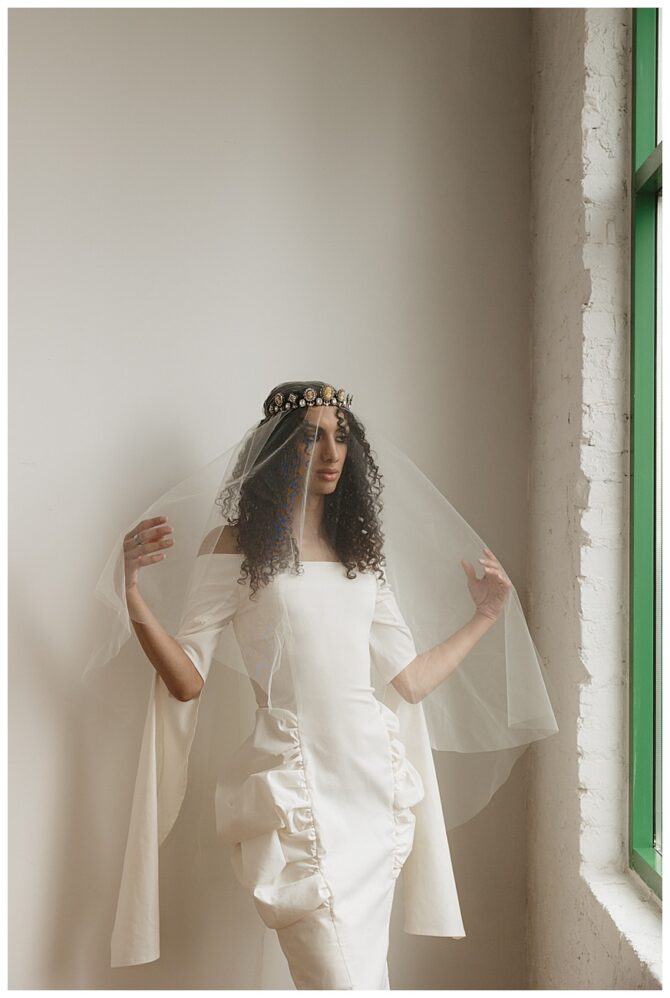
Inclusivity: A Kinder Approach to Sizing
Westbrook believes that the traditional sizing system is emotionally harmful, particularly in the world of wedding wear. He witnessed this firsthand during his time working at a major retailer, where he realized that numbers on a tag carried a significant emotional weight for many clients.
His solution is revolutionary—he designs for shapes, not numbers. In his consultations, Westbrook focuses on the person’s distinctive form.
“When you come to a consultation or to try on a garment, what I tell you is that the person that this was made to fit is this tall, and this is their bust measurement, their waist measurement, their hip measurement, and their bra size. This more detailed shape tells people much more than a singular number can,” adds Westbrook. “It’s just a little bit more kindness with you and yourself as you’re putting on garments in what can be a very emotional process. This simple shift provides a kinder, more empowering experience, changing the conversation from ‘Why don’t I fit?’ to ‘This simply isn't the right shape for me, and that's okay.’”
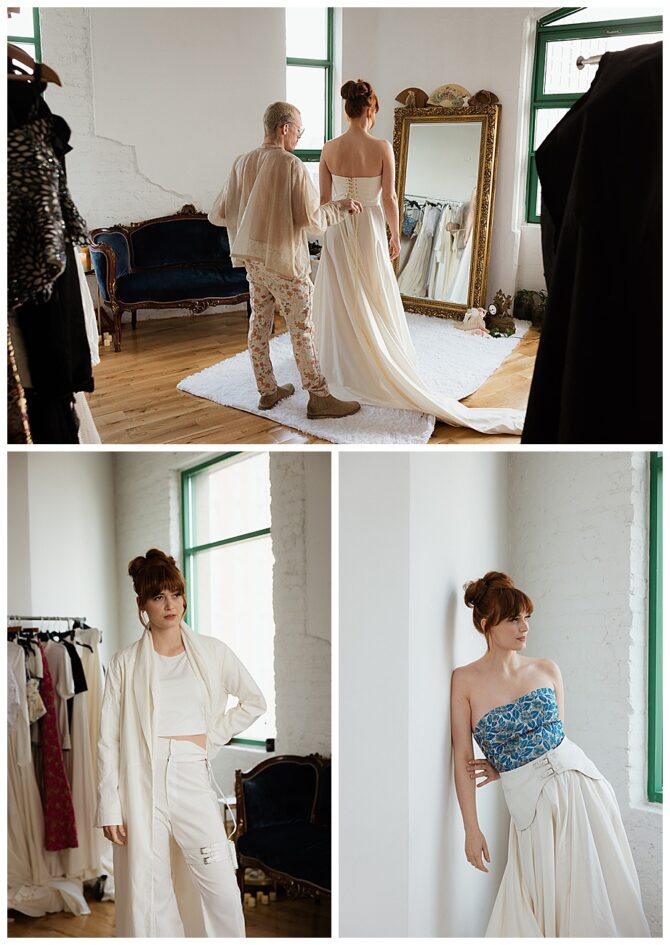
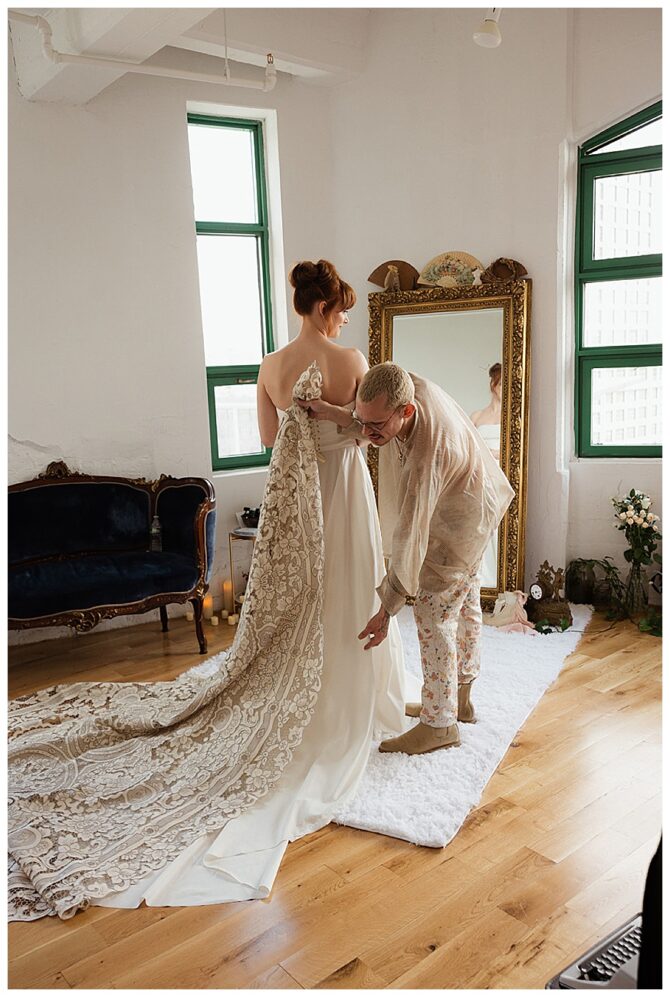
Transforming The Wedding Industry: The Impact of One Starfish
Westbrook’s work is deeply personal, rooted in his own experiences as a queer child living in a heteronormative world. His goal of transforming the wedding industry started at a young age, due to an early understanding that something as joyful and beautiful as a wedding could be considered illegal. This led to his lifelong aim of crafting a space where everyone feels celebrated and safe.
Westbrook doesn’t wish to save the entire industry at once, but rather to make a difference one person at a time—like the boy in the starfish story who saves one starfish after another. He approaches each client with a gentle touch, becoming a trusted friend who can hear their deepest desires and insecurities. Westbrook measures his success not in the number of outfits sold, but in the number of individuals who leave his studio feeling seen and celebrated.

Clothing for Ritual and Ceremony
Westbrook’s creations are not merely outfits for a party, they are garments for ritual and ceremony, deliberately focused on reminding couples of the sacred promise they are making. “Changing the wedding industry for the better means people will remember the ritual and the promise,” remarks the designer. “There’s the wedding, which is the party, and then there’s the marriage and the union, which is something else. And that difference is everything, and something the wedding industry does not always recognize, so that is why I make clothing for ritual and ceremony.”
Furthermore, the future of TL Brooke Bridal is aimed at solving its last-mile problem, which is generally described as the phenomenon of logistical challenges, high costs, or other setbacks associated with delivering the final product to the client’s doorstep. For TL Brooke Bridal, this last-mile problem isn’t about shipping logistics. “Our last-mile problem is finding our people. We know they’re out there, we know we’re a fit, it’s about making that serendipitous—or seemingly serendipitous—connection to the target audience that sparks a flame,” concludes the designer.
Timothy Westbrook’s work is a powerful showcase of the idea that true beauty lies not in conformity, but in authenticity and purpose. By challenging the industry’s traditional norms around materials and body image, he is proving that wedding fashion can be both elegant and responsible.
Cover photo and photos 4-7 by Lensy Michelle Photography | Photos 1-3 and 8 by Violet Cristina Photography





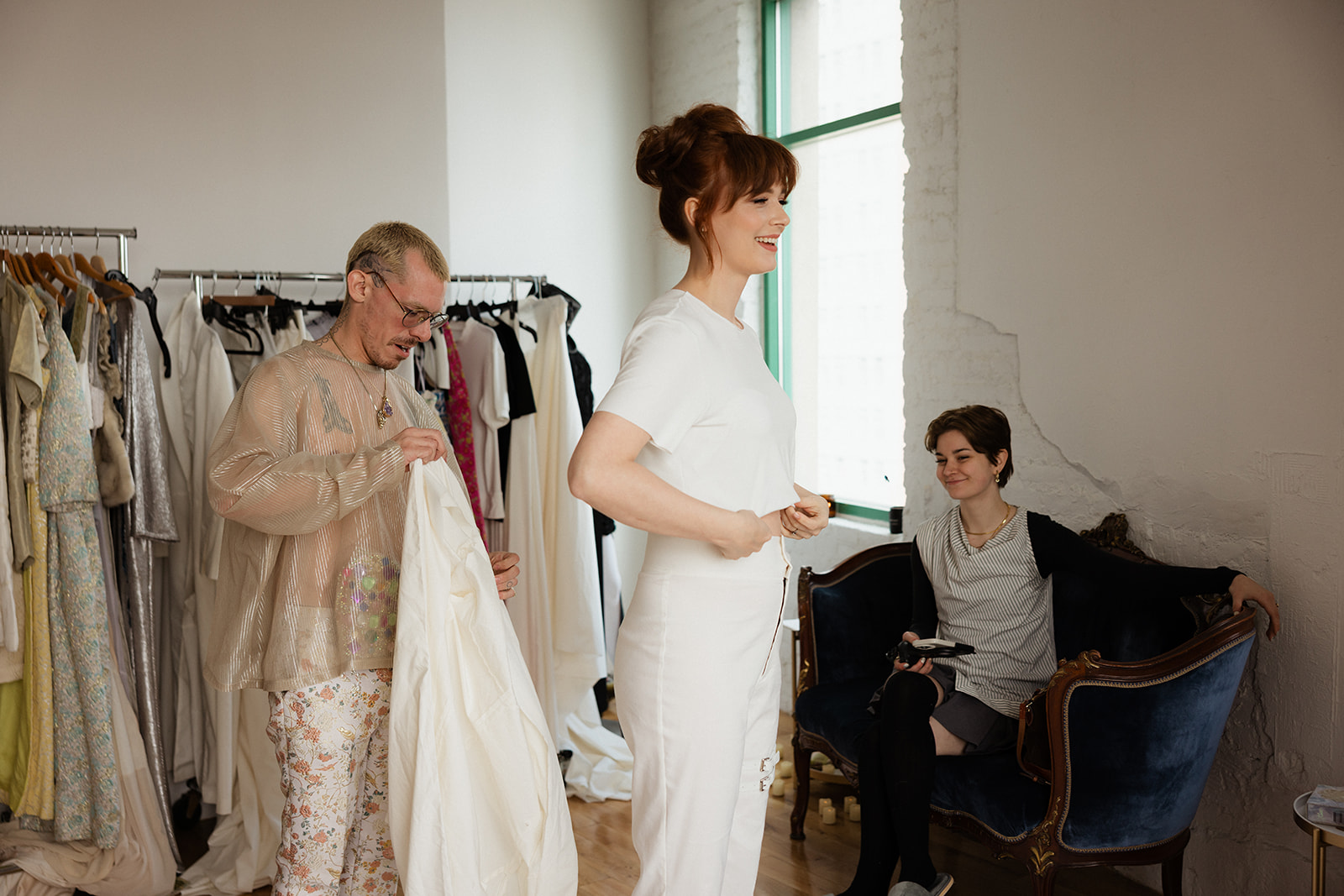

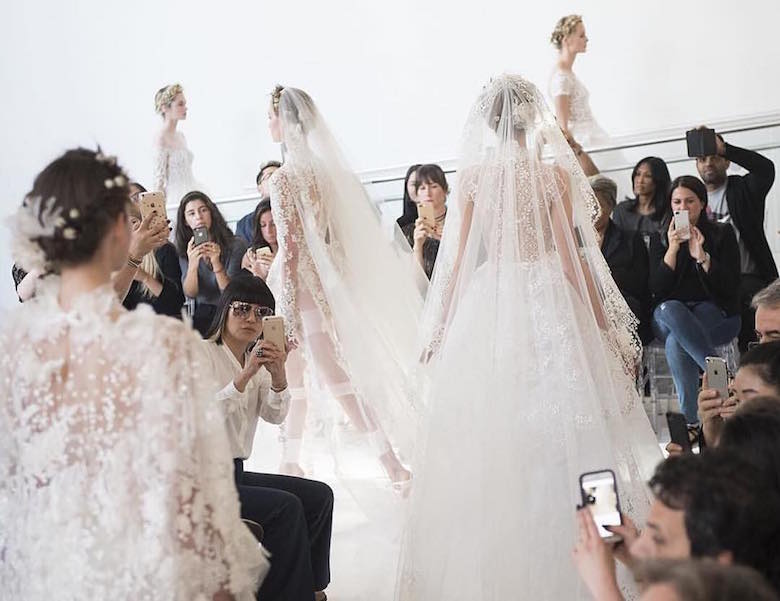
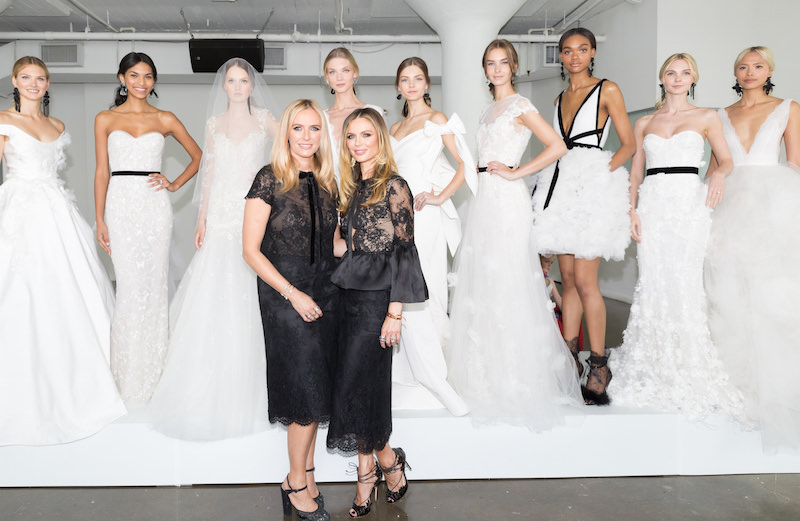
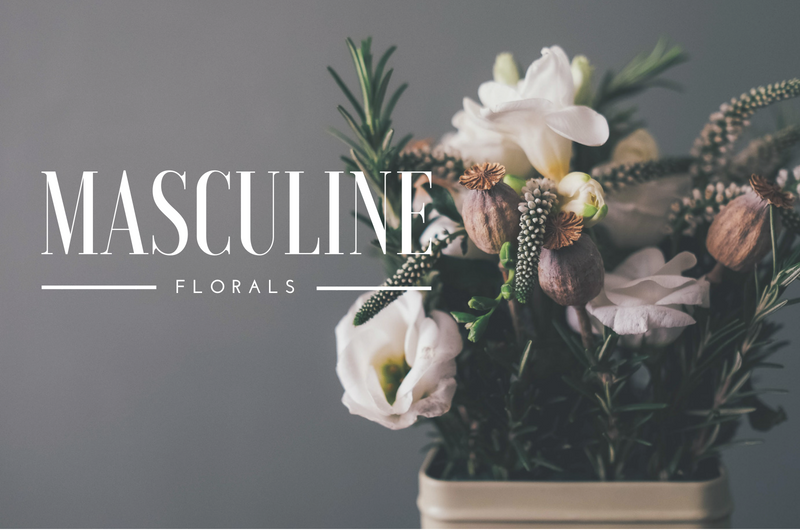



You must be logged in to post a comment.